Essential Strategies for Balancing Work and Life in Construction
Editorial Note: This article was brought to you courtesy of Rose Morrison, managing editor of ...
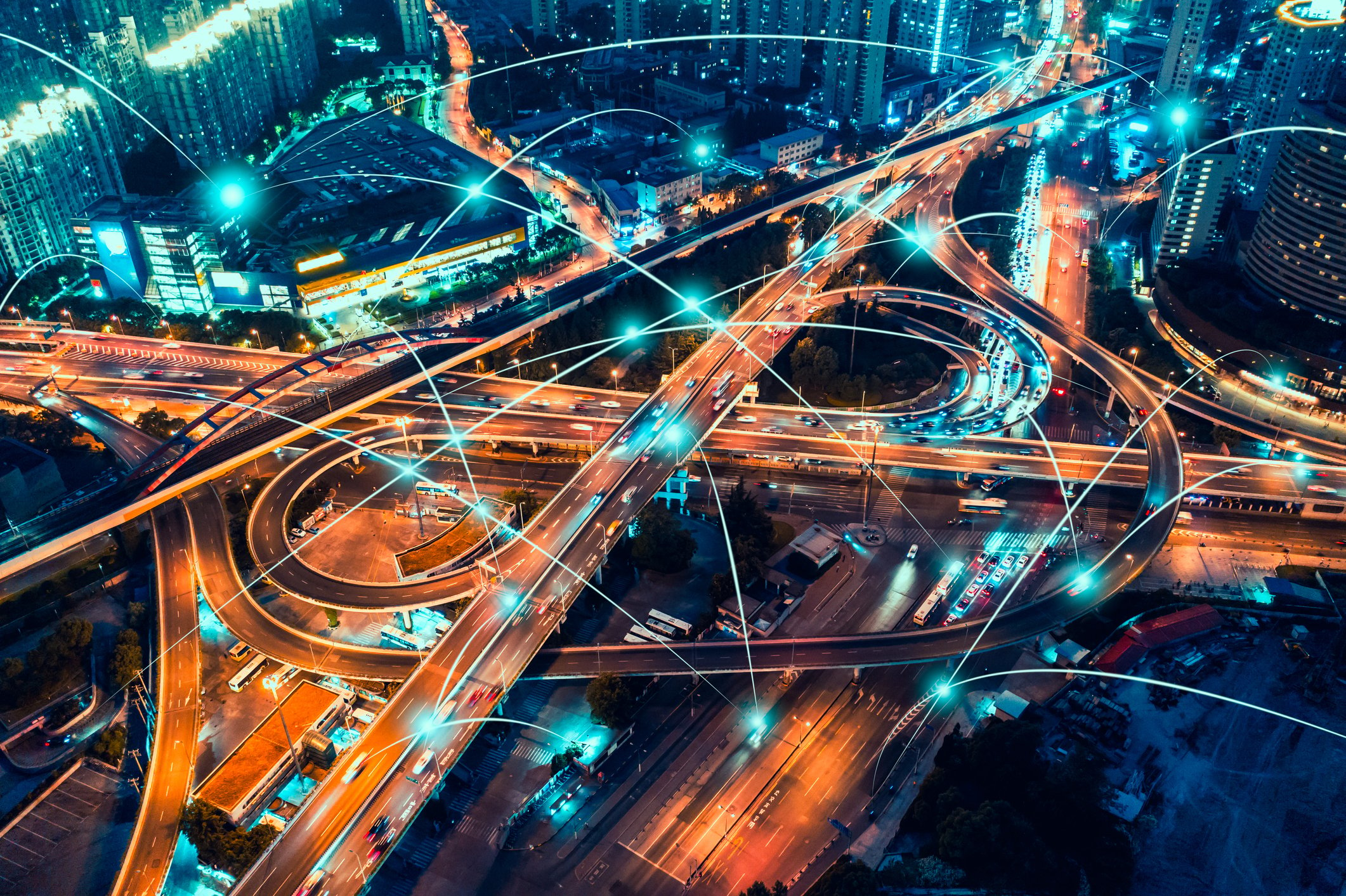
“Going forward, all leaders will need to ask themselves: Do we want an airport or a smart airport? A bank or a smart bank? A highway or a smart highway? A supply chain or a smart supply chain? A business model or a smart business model? A city or a smart city?” -“A Smarter Planet: The Next Leadership Agenda” by Samuel J. Palmisano, CEO of IBM (Nov. 12, 2008)
Those with an eye on the future will eventually find their way to the city. Whether it’s the rain drenched skyline of Blade Runner’s Los Angeles or the glittering techno-utopianism of the Jetson’s Orbit City, our collective imagining of what lies ahead for our species has always been tightly focused on the urban landscapes just beyond the horizon.
Our fascination isn’t for nothing. For better or for worse, the city is the stage upon which most of humanity’s future is destined to play out. Our current global population sits at about 7.7 billion people, more than half of whom are city dwellers. The United Nations estimates that by 2050 we will be within throwing distance of 10 billion people on Earth, a staggering 68% of whom are expected to live within one urban enclave or another. How will cities, on an increasingly warming and resource deprived planet, adapt to this massive surge in inhabitants? How will our urban spaces be reshaped, who will do the reshaping, and how will our shared imaginings influence the end result? And for the growing number of us who will call these places home, what will life be like in the cities of tomorrow?
One answer to these questions has slowly risen above the rest and come to dominate the conversation among futurists, city planners, corporate CEOs, and billionaire power brokers over the past several decades: the Smart City. In this article we will explain what a smart city is and sketch a brief history of its origins. Then we will explore the good, the bad, and the ugly aspects of some smart cities that have been proposed and a few that already exist. Finally, we will summarize some of the criticisms that have been leveled against the idea of the smart city and discuss how we might rethink what it is that makes a city “smart.”
Part of the difficulty in discussing smart cities is that there is no single agreed upon definition. Adding to the difficulty is that the term “smart city” really describes three things: First, a select list of existing cities that have adopted certain “smart” elements; second, a narrower list still of smart cities that have been built from scratch in recent years; and third, the hazy ideal of a futuristic urban terrain that has yet to be constructed. To make matters more confusing, the concepts of the smart city and the green or eco-city have become cross-pollinated in recent years and are often used interchangeably in popular media to describe one another. Bearing all this in mind, we can at least outline the broad contours of what it means to describe a city as “smart.”
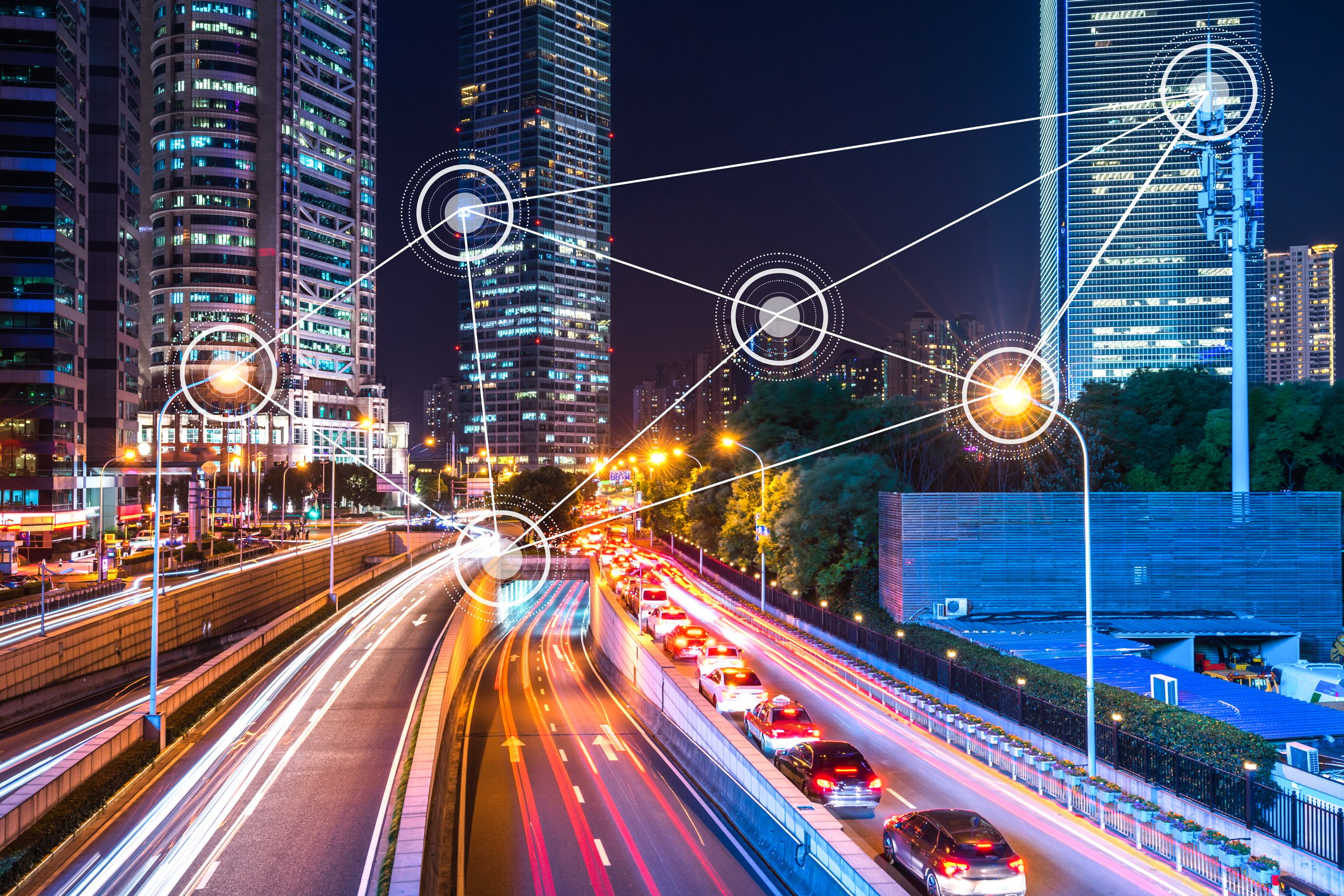
Let’s start simple: Smart cities use digital technology and data to solve a range of problems associated with urban living such as population density, air and water pollution, waste disposal, energy inefficiency, traffic, and crime. We immediately run into the problem that most if not all cities can claim to fit this description in one way or another. After all, most cities use data and technology every day, and yet not all cities are considered “smart”. That’s because what sets the smart city apart is its whole-hearted embrace of digital technology–particularly the Internet of Things (IoT)–as the guiding force of its existence.
From here, it’s helpful to turn to some of the key players that have emerged as authorities in the conceptualization and creation of smart cities in recent years. Cisco is a multinational internet technology corporation that you’re probably familiar with as the company that built your wi-fi router. It was also one of the original movers and shakers in the world of smart cities. Here’s how Cisco defines the idea:
A smart city uses digital technology to connect, protect, and enhance the lives of citizens. IoT sensors, video cameras, social media, and other inputs act as a nervous system, providing the city operator and citizens with constant feedback so they can make informed decisions.
The World Bank, which partners with and invests in a number of smart city projects, offers its own two-prong definition that both echoes and expands upon the idea as laid out by Cisco. To the World Bank, a smart city is:
- A technology-intensive city, with sensors everywhere and highly efficient public services, thanks to information that is gathered in real time by thousands of interconnected devices.
- A city that cultivates a better relationship between citizens and governments - leveraged by available technology. They rely on feedback from citizens to help improve service delivery, and creating mechanisms to gather this information.
Between Cisco and World Bank’s definitions, we can begin to suss out three common selling points that proponents of the smart city frequently make.
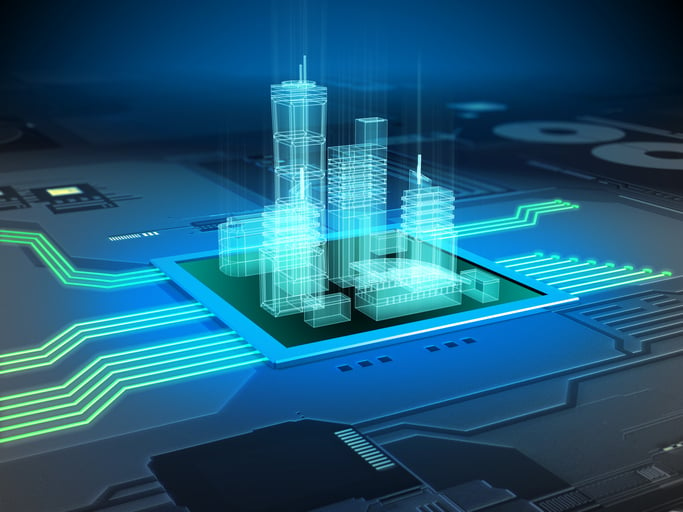
Under the banner of these three overarching claims, proponents argue that the route to a more livable and sustainable future leads through the digitized streets of the smart city. We will turn a more critical eye to this perspective in a moment. For now, let’s take a look at where the idea of the smart city came from.
The history of the smart city is rooted in two threads of thought. The first is a post-war cybernetic vision of cities as complex systems that function along the lines of a computer, a controversial theory popularized in Jay W. Forrester’s influential 1969 book, Urban Dynamics. The second is New Urbanism, a school of urban planning birthed in the 1980s that prioritizes livability and sustainability. The city of Los Angeles, with its early adoption of computer aided data analysis in the 1970s under the aegis of its Community Analysis Bureau, is a prime example of what would later become known as a smart city. The term itself first appeared in 1990s news reports about cities that adopted new technological systems to improve services. The label was also used at the time to describe a handful of futuristic urban projects that were never built, including the Multi-Function Polis (MFP) in Adelaide, Australia.
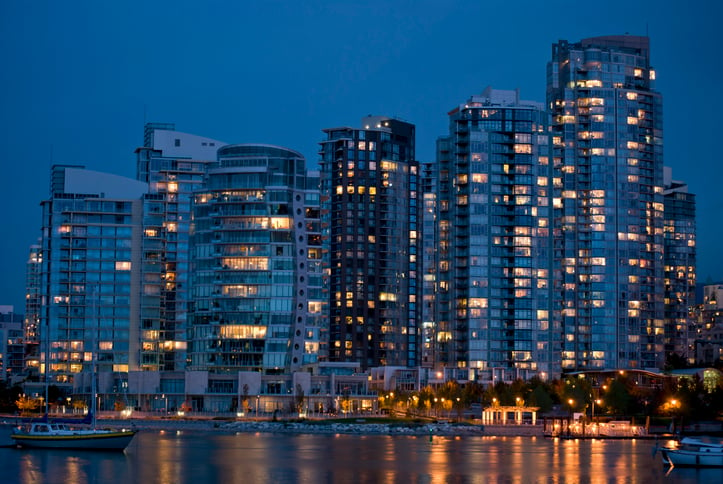
In their paper, Smart Cities as Corporate Storytelling, Swiss professors Ola Söderström and Francisco Klauser argue that our contemporary conception of the smart city is largely the product of marketing language developed by Information Technology corporations–Cisco, IBM, and Siemens being chief among them. Indeed, the dawn of the modern idea of the smart city can be traced to a 2008 speech by Samuel J. Palmisano in which the IBM CEO urges the construction of “smarter cities” to stave off climate change and economic instability. A year later, IBM filed a trademark on the term “smarter cities” and began building what would eventually turn into a multi-billion dollar campaign of IT based urban infrastructure solutions. The company’s new enterprise was first fully showcased in 2011 in the City Operations Center of Rio de Janeiro. The trend took off from there and generated a global market that is expected to reach a valuation of $2.5 trillion by 2026.
These days there are many examples of smart cities. Some are master planned and built from scratch, like the Songdo International Business District in Seoul, South Korea. Others are cities that already existed and were retrofitted to become “smarter,” like Singapore, Seattle, Amsterdam, or any number of other modern metropolises all over the world. And then there are the smart cities that exist (for the time being) only on paper, like the Portuguese PlanIT Valley, Bill Gates’ Belmont, or Telosa, the $400 billion techno-utopian dreamchild of a former Wal-Mart executive. How effective these places are at achieving their proclaimed goals rests largely in the eye of the beholder. There are, nonetheless, a few examples that boldly illustrate both the exciting potential and troublesome pitfalls of the smart city ideology. Let’s take a closer look.
Oslo, the capital city of Norway, was founded around 1000 AD. More than a thousand years later, this Nordic metropolis is home to nearly 700,000 people and is consistently listed as one of the smartest and greenest cities on Earth. This is partially due to Oslo’s adoption of policies aimed at creating a more sustainable and eco-friendly urban environment. The city’s forward looking architecture and widespread embrace of electric vehicles are also factors. Another major contributor to Oslo’s high status as both a green and a smart city is its harnessing of IoT style digital technology. LEDs and smart streetlights are all the rage these days, but back in 2011, Oslo became one of the first cities in the world to successfully deploy a “smart” streetlighting system. Using a distributed network of sensors capable of detecting traffic, weather, and natural light exposure, Oslo was able to create a streetlighting system that could be centrally monitored and easily controlled to increase energy efficiency across the city. The result? A 70% reduction in streetlight energy use and the trimming of 1,440 tons of CO2 emissions per year. The system, which has been continually refined since its early days, now encompasses roughly 55,000 streetlights, and has been replicated in cities all over the world.
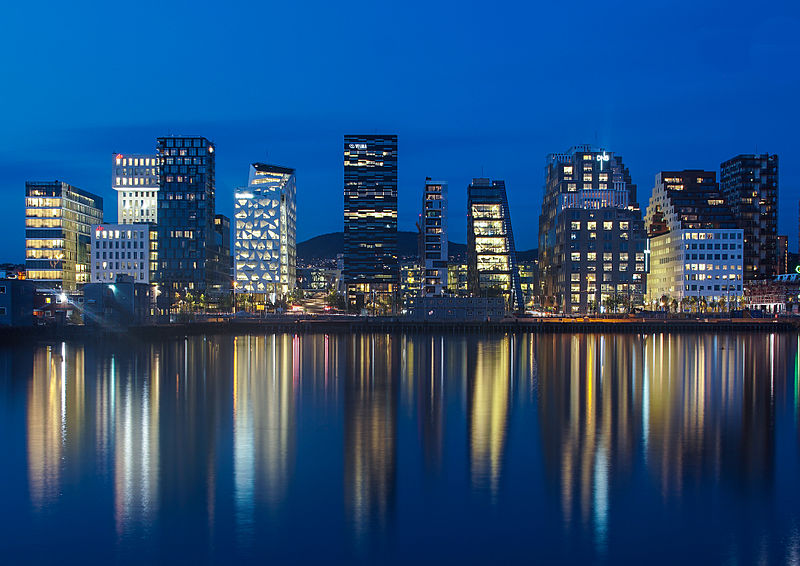
Above photo: Olso, Norway. Image credit: Wiki Commons
We’re holding up Oslo as a model smart city for two reasons. First, it demonstrates that when deployed correctly, “smart” technology is indeed a sound solution for certain urban problems: Without data and digitized sensors, Oslo’s interconnected network of energy efficient streetlamps wouldn’t have been possible. The other reason is that the end result is overwhelmingly positive: Smart streetlights save money and shrink the city’s carbon footprint every year, which, in the age of climate change, is a tangible good for all life on the planet. Sustainability and livability are, after all, often cited as the driving force behind smart cities, and Oslo appears to perform well in both categories. However, not all smart cities leverage their data and technology to such successful ends.
In 2016, Columbus, Ohio edged out 77 competing cities for a $50 million award to build a smart transportation system as part of the US Department of Transportation’s Smart City Challenge. Under the moniker Smart Columbus, the program’s managers set to work on a body of projects to make the city “smarter” by the challenge’s deadline in 2021. These projects included fleets of self-driving shuttles and electric vehicles, a trip planning app called Pivot, a series of public transit kiosks, a connected vehicle environment system that would allow automobiles and traffic signals to communicate with one another, and a $15.9 million open-source operating system for visualizing and sharing data. Fast forward five years later and Columbus has failed to live up to the smart city hype. The public transit kiosks were woefully underused, the driverless shuttles turned out sluggish at an average speed of four miles per hour, and only about 1,000 people citywide ended up downloading the trip planning app.

Image credit: Columbus.gov
We chose Columbus as an example of a “not-so-smart” smart city because it shows that high tech gadgetry doesn’t always lead to better outcomes. Many of the city’s smart transportation programs are planned to continue in the years to come, but city officials have conceded that the overall project didn’t live up to expectations. The less than stellar performance, they said, was due in large part to the untimely arrival of COVID-19.
The pandemic was similarly cited in May 2020 for the failure of another smart city initiative in the Canadian city of Toronto, Ontario–though critics believe the project collapsed as a result of their protests. Unlike Columbus, which involved retrofitting an existing city with smarter systems, this next project called for the construction of an entire smart city from scratch.
Launched in the fall of 2017, Sidewalk Toronto was a $1.3 billion smart city development envisioned by Sidewalk Labs, an urban planning subsidiary of Google and the tech giant’s parent company, Alphabet.
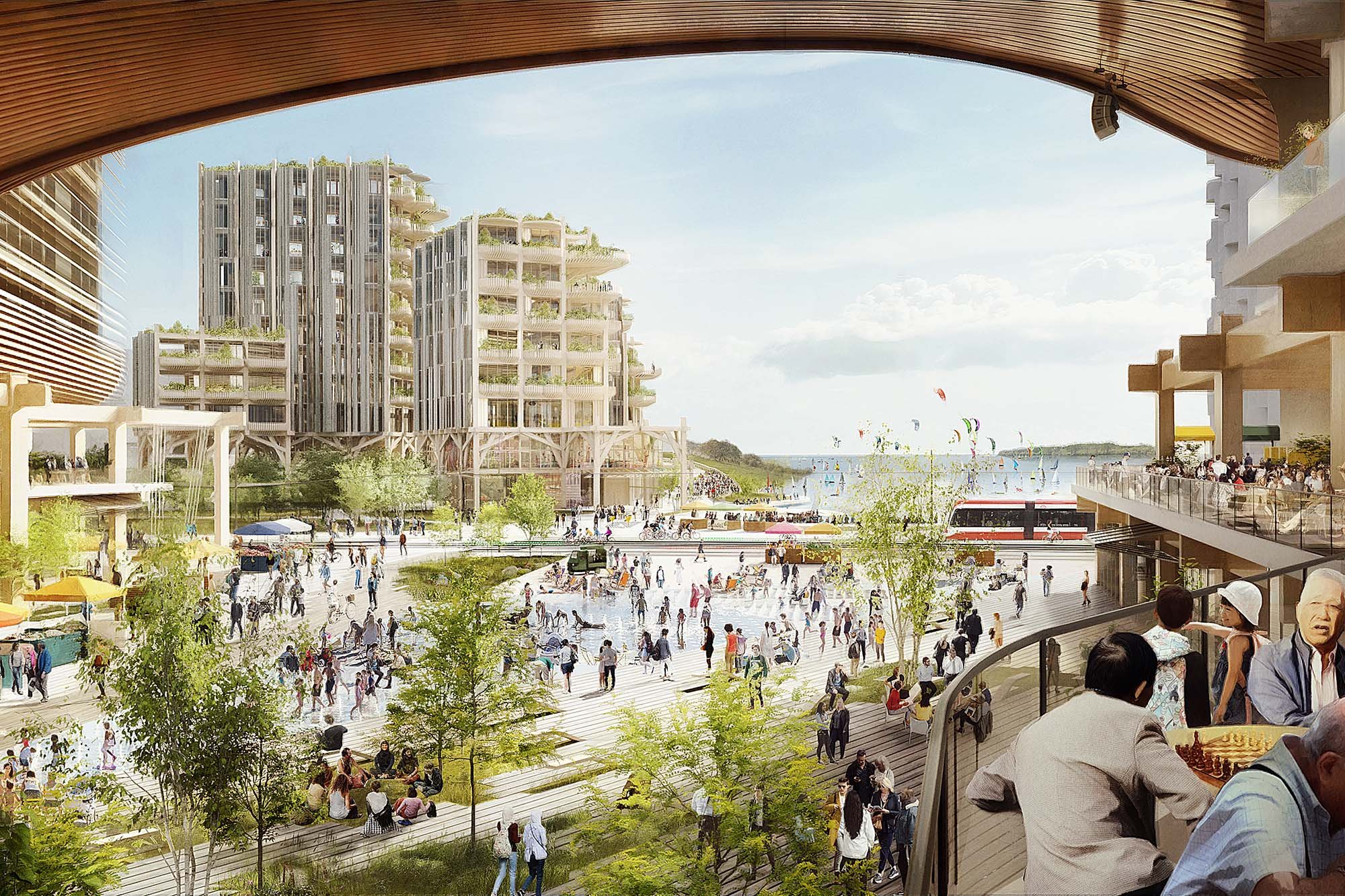
Image credit: Sidewalk Toronto
Sidewalk Labs’ Quayside waterfront proposal included a wide range of high-tech green and smart systems, including the installation of sensors that would track the movements and behaviors of residents across the entire cityscape. Meanwhile, the data collected would be used to guide everything from the automatic functioning of traffic signals to a legion of subterranean robots tasked with waste disposal and package delivery. The idea of an all-seeing cybernetic eye constantly watching the city’s residents drew fierce criticism from privacy advocates and other tech entrepreneurs, one of whom described Sidewalk Toronto as “a dystopian vision” that was bad for democracy. At one point, BlackBerry co-founder Jim Balsillie branded the proposal as a “a colonizing experiment in surveillance capitalism attempting to bulldoze important urban, civic and political issues.” The project’s directors struggled for many years to dampen the backlash and steer public opinion into more favorable waters but their efforts eventually failed. Sidewalk Labs abandoned its smart city proposal and the 12-acres of waterfront property where it would have stood remains unused to this day.
Sidewalk Toronto exposes the ugly flaw at the heart of the claim that smart cities are inherently good for democracy. In the case of Sidewalk Toronto, questions about how a private IT company would use the data extracted from the city’s residents were chilling enough to play a hand in the project’s eventual downfall.
It’s become clear in recent years that smart cities aren’t always what they’re cracked up to be. This realization has even sunk in at Cisco, which pulled the plug on its smart city campaign in the winter of 2020. Meanwhile, a recent analysis of IBM’s smart city initiative in Rio de Janeiro has found the program severely lacking in several key respects; including, as the researchers stated, its effectiveness at solving problems of “radical inequality, or systemic poor governance, or compromised urban planning agendas — all of which continue to be the ‘dumbest’ elements of Rio de Janeiro.”
Though data and digital technology can indeed be used to solve certain urban problems, they can also fall short of expectations in other areas, and even raise serious questions about mass surveillance and corporate overreach. There is no shortage of ambitious claims about the potential benefits of smart cities, whether it’s increased livability and sustainability or preventing crime before it happens. The problem is that it’s unclear how, if at all, these promises can be effectively, safely, and democratically delivered by a distributed network of IoT sensors, apps, and operating systems.

For their part, Söderström and Klauser describe the smart city as a “technocratic fiction” in which urban problems are reduced to clusters of datasets and anything that can’t be quantified or easily measured is simply left out of the equation. This approach, they argue, fails to contend with–and even seeks to eliminate–the messy reality that our cities are complex and diverse physical places driven more by the accrual of history and political choices than master-planned systems dynamics. What’s more, evaluating a city as “smart” based solely on the level of its technology ignores and devalues other key performance indicators such as the availability of housing, employment, healthy food options, and social services–issues that are far more pressing in most of the world’s cities. The result is an incentive for city leaders to prioritize and invest more deeply in the “smart” rather than the “sensible.”
Proponents often assert that machine intelligence can dramatically improve life for those who inhabit the smart cities of the future. Yet there is a growing body of evidence that shows that algorithms are just as biased and flawed as the human beings who build and use them. Knowing this to be true, how can we in good conscience hand over the management of urban life to the unassailable black box logic of autonomous computers? This raises another question: whose interests are served by the data extraction mechanisms enmeshed in the fabric of smart cities? Or more importantly, whose are not?
In the end, the shining ideal of the smart city often translates to little more than luxury gated communities whose advantages flow only upward to the wealthy. Bruce Sterling is a Hugo Award winning science-fiction author and one of the original American writers of cyberpunk, a dystopian subgenre preoccupied with the supremacy of technology in human society. Here’s his take, published in a 2018 article for The Atlantic, on who wins and who loses in the smart city:
...the cities of the future won’t be “smart,” or well-engineered, cleverly designed, just, clean, fair, green, sustainable, safe, healthy, affordable, or resilient. They won’t have any particularly higher ethical values of liberty, equality, or fraternity, either. The future smart city will be the internet, the mobile cloud, and a lot of weird paste-on gadgetry, deployed by City Hall, mostly for the sake of making towns more attractive to capital.
In his 2013 pamphlet Against the Smart City, writer Adam Greenfield argues that how we think and talk about cities matters. If we are not careful with our imaginary rhetoric, it might misshape the urban environments that get built in real life.
Proliferated across the network without end or limit, we can see (the smart city) filling an entire space of sociotechnical possibility with the airless hegemony of a single bad idea that no one has the time or energy to fight, least of all the citizens whose lives will wind up conditioned by it. The time to challenge this body of intellectual production, to develop and advance and debate alternative conceptions, is now.
It’s important to remember that cities are first and foremost places for people. Instead of centering their attention on a cyberneticist vision of urban dynamics, those who seek to build smart cities ought to refocus their lens on the human scale design of New Urbanism, with its emphasis on livable mixed-income communities. Smart city advocates would also do well to recall the wisdom of influential urban writer Jane Jacobs, who believed that cities should be fun places where order isn’t imposed top-down but allowed to emerge spontaneously from the interplay of the diverse individuals who live, work, and play within them.
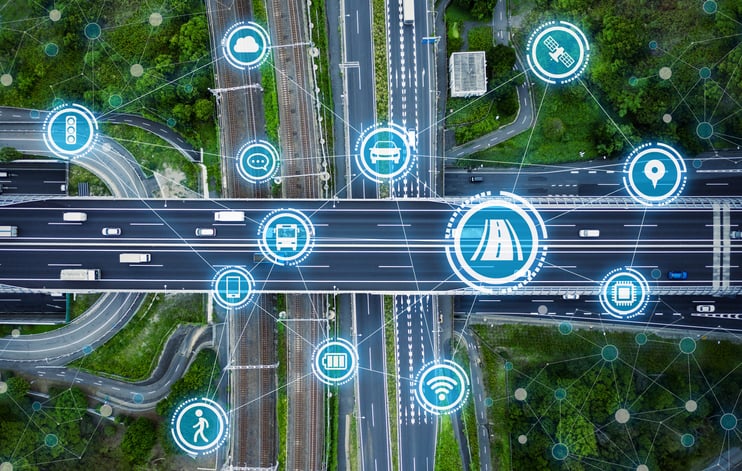
While there’s plenty of room for criticism, it’s also plain to see that the idea of the smart city isn’t beyond salvation. It’s just in need of some rethinking. If data is to remain at the core of the smart city, however, one step in the right direction would be to enforce strict privacy protections and ensure that whatever information is collected is also made available to the public. Instead of scattering sensors across an entire cityscape, perhaps smart urban technology would be more effective and less troubling if it were applied to narrower problems with clearly stated boundaries and objectives. Bluetooth, NFC trackers, and QR codes might understandably raise some eyebrows if they were widely deployed to monitor city residents’ every move.
And yet this same technology is dramatically less concerning when these Orwellian factors aren’t at play and, rather, technology and data is used to give users a visualize a problem they’re trying to solve in greater detail and, when they can see the bigger picture, empower them to resolve and learn from it.
The smart city should be more than a market building strategy for IT companies and starry-eyed billionaires. It should evolve to live up to a more grounded and inclusive understanding of what a safe, livable, sustainable, and democratic urban future might look like. Bottom line: Technology will always play a role in the cities we call home.
It just shouldn’t be in the driver’s seat; it should assist and empower end users to drive safer outcomes, stay on course, and transport them to destinations unseen prior to technological invention.
Being able to use technology, for instance, to track the location of valuable power tools and equipment from the tool room, across multiple jobsites, and back with fewer errors and reroutes that can lead to crippling downtime and expensive overruns and losses in productivity that are hard to course-correct—this was part of the vision we had when we launched the ONE-KEY™ app at Milwaukee® Tool. But it’s not the whole vision.
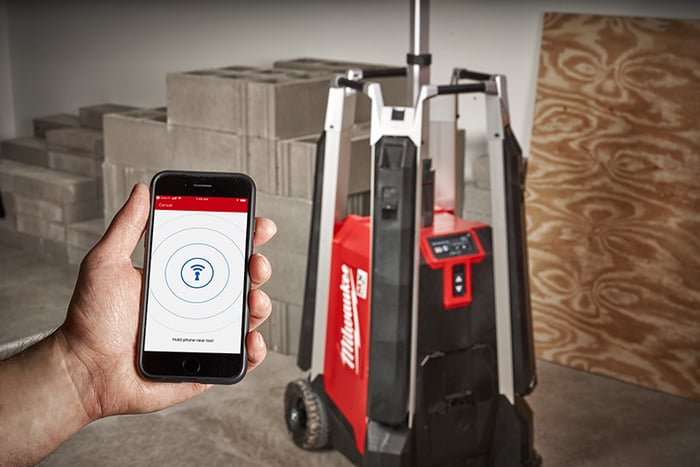
In short, we’re working with contractors to leverage data and build the industry’s largest repository of things that end up on jobsites in support of a broad, connected ecosystem that helps end users:
What to know more? Learn 4 inventory app advantages.

Sign up to receive ONE-KEY™ news and updates.
Editorial Note: This article was brought to you courtesy of Rose Morrison, managing editor of ...
Editorial Note: This article was brought to you courtesy of Rose Morrison, managing editor of ...
Editorial Note: This article was brought to you courtesy of Rose Morrison, managing editor of ...


